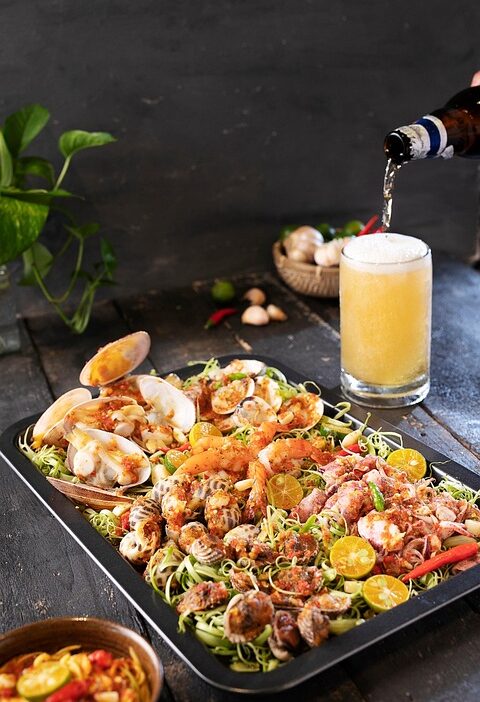In the age of Instagram and Pinterest where a single photo can spark cravings or inspire culinary adventures, food styling has become an art form in itself. It’s not just about how the food tastes; it’s also about how it looks. The presentation can elevate a simple dish into a culinary masterpiece that tantalizes the eyes as much as the palate. Here’s a guide on mastering the essentials of food styling for home cooks and aspiring chefs alike.
1. Understanding the Importance of Food Presentation
Food styling serves several purposes:
- Eliciting Appetite: Our eyes play a crucial role in our perception of food. The visual aspect can trigger hunger and cravings, making appealing dishes more tempting.
- Enhancing Experience: A well-presented plate elevates the dining experience, transforming a simple meal into an occasion.
- Storytelling: Presentation can convey stories or cultural significance. Every dish has a narrative, and how it’s arranged can enhance that tale.
2. Color and Contrast
One of the fundamental aspects of food styling is understanding color. A vibrant, colorful plate captures attention and evokes excitement:
- Use Complementary Colors: Incorporate contrasting colors; for instance, a bright green herb can add life to a dull-colored dish.
- Textures Matter: Mixing different textures can bring depth to your presentation. Pair soft foods with crunchy garnishes or vibrant greens to create a visual and tactile contrast.
3. Plating Techniques
The way you plate your food can completely transform its appearance. Here are some essentials:
- The Rule of Thirds: Divide the plate visually into thirds and place your main component off-center. This creates a more balanced and aesthetically pleasing look.
- Build Height: Adding height to your presentation can make it more dynamic. Layer ingredients or use a ring mold to create towers of flavors.
- Negative Space: Leave empty space on the plate. It draws the eye to the food, making it the focus of attention rather than crowding the visuals.
4. Garnishing Wisely
Garnishes serve both aesthetic and functional purposes. They can enhance the flavor profile and add visual appeal:
- Edible Flowers and Herbs: Fresh herbs or edible flowers can bring color and a touch of elegance.
- Sauces and Drizzles: A well-placed drizzle of sauce can elevate the look—practice creating artistic lines or dots with a squeeze bottle.
5. Choosing the Right Dishware
The selection of dishware can significantly affect food presentation:
- Color and Texture: The color of the plate should complement the food. White plates are versatile and highlight colors, while colored dishes can make a statement.
- Shape and Size: Play with shapes. Round plates are classic, while square or unusual shapes can offer a modern twist. Ensure the plate size suits the portion—too large of a plate can make the food appear sparse.
6. Lighting and Angles
Good lighting is essential for showcasing your food effectively:
- Natural Light: Whenever possible, opt for natural light. It enhances colors and adds a fresh look. Sunset or sunrise light can provide a warm glow.
- Angles Matter: Experiment with different angles (from above, at a 45-degree angle) to find the one that makes your dish look most appetizing. Some foods look better from a bird’s-eye view, while others benefit from a side profile.
7. Practice and Experimentation
Lastly, the key to mastering food styling is practice.
- Experiment With Different Styles: Look at various food styles, from minimalist aesthetics to extravagant presentations.
- Seek Inspiration: Follow food stylists on social media, enroll in workshops, or dive into food styling books. The more you expose yourself to diverse styles, the more you will develop your unique aesthetic.
Conclusion
Food styling is an intricate dance between art and science, requiring a good eye, an understanding of flavors, and an enthusiastic willingness to experiment. By honing your plating skills, paying attention to color, and considering every element of presentation, you can transform your cooking into a feast for the eyes. So go ahead, unleash your creativity, and let your food tell its story in a visually stunning way!



